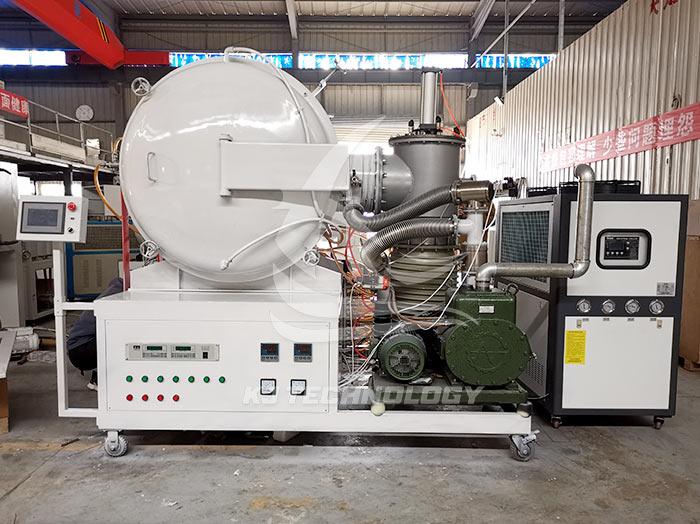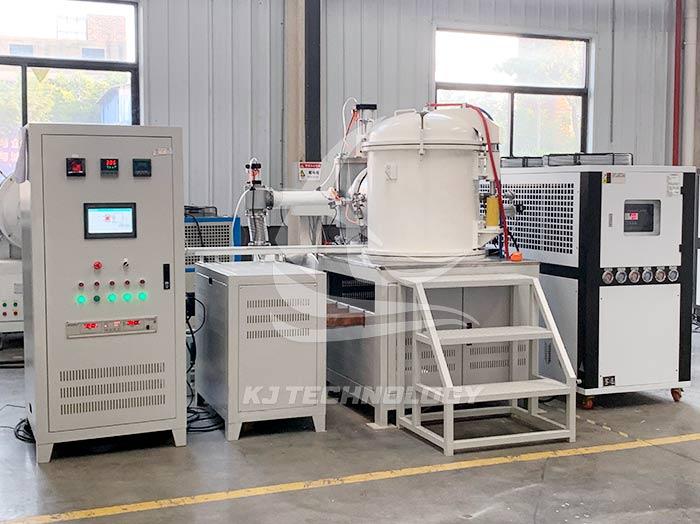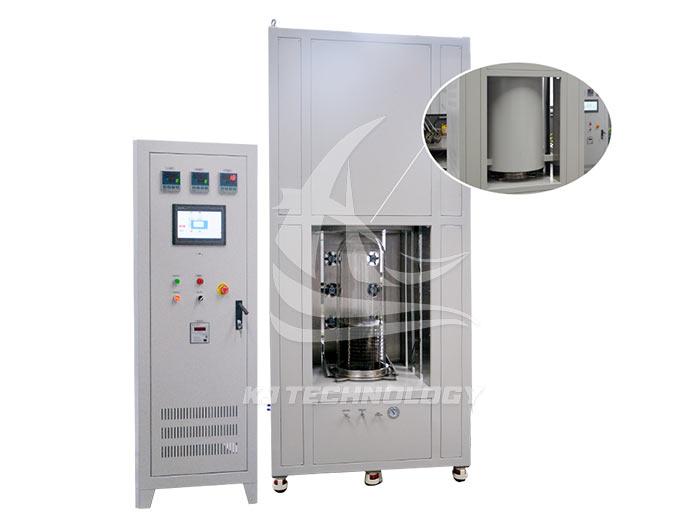Application of Gas Vacuum Furnace Battery Manufacturing Industry
 07-29-2025 Author: KJ technology
07-29-2025 Author: KJ technology
The application of gas vacuum furnaces in the battery manufacturing industry is extensive and critical, mainly reflected in improving the performance of battery materials, optimizing manufacturing processes, and ensuring battery safety and lifespan. The following is a specific introduction:
1. Improve the performance of battery materials
Sintering of positive electrode materials: In lithium battery positive electrode materials such as LiCoO ₂, LiNi ₀ ₈Co₀. ₁Mn₀. During the sintering process of ₁ O ₂, the gas vacuum furnace achieves uniform doping and densification of the material by precisely controlling the temperature and oxygen partial pressure. For example, by controlling the oxygen partial pressure within the range of 10-100Pa, LiNi ₀ with a capacity retention rate of up to 98% can be prepared ₈Co₀. ₁Mn₀. ₁ O ₂ material significantly improves the cycle life and energy density of batteries.
Negative electrode material processing: For negative electrode materials such as graphite and silicon-based materials, gas vacuum furnaces can effectively remove impurities and gases from the materials at high temperatures, improving the purity and electrochemical performance of the materials. For example, heat treatment of graphite negative electrode material in a vacuum environment can significantly reduce irreversible capacity loss during its initial charge and discharge process, and improve the charging and discharging efficiency of the battery.
2. Optimize battery manufacturing process
Vacuum bonding: In the process of preparing battery slurry, a gas vacuum furnace eliminates the air in the tank by vacuuming, avoiding the generation of bubbles and ensuring the uniformity of slurry mixing. This is crucial for improving the internal structure and electrochemical performance of batteries.
Vacuum drying: During the drying process of battery electrodes or cells, a gas vacuum furnace combines vacuum environment with hot air circulation heating to quickly remove moisture and solvents, avoiding the surface hardening phenomenon that is prone to occur during atmospheric pressure drying. This drying method has the advantages of low drying temperature, high drying efficiency, and good material uniformity after drying.
Vacuum injection: During the battery injection process, the gas vacuum furnace ensures that the electrolyte fully infiltrates the electrode material by vacuuming, improving the filling effect of the electrolyte and reducing the residual bubbles inside the battery. This is of great significance for improving the electrochemical performance and safety of batteries.
Vacuum packaging: During the battery packaging process, a gas vacuum furnace seals the battery in a vacuum environment, effectively preventing moisture and gas from entering the interior of the battery and improving the airtightness of the seal. This is crucial for ensuring the long-term stable operation of batteries.
3. Ensure battery safety and lifespan
Negative electrode plate processing: In the process of processing the negative electrode plate of nickel hydrogen batteries, a gas vacuum furnace uses vacuum sintering and cooling protection technology to manufacture negative electrode plates with high strength, good flexibility, and high qualification rate. This negative electrode plate can extend the service life of assembled batteries and enhance their resistance to overcharging and overdischarging.
Battery testing: Gas vacuum furnaces are also used in the battery testing process, such as vacuum leak detection technology, which can accurately detect the sealing problems of battery casings, modules, and components, eliminate leakage hazards from the source, and ensure the long-term stable operation of batteries.
4. Promote battery recycling and reuse
Retired battery recycling: In the field of retired battery recycling, gas vacuum furnaces use vacuum pyrolysis technology to separate electrode materials and separators at 500-800 ℃, achieving efficient recovery of valuable metals such as cobalt, nickel, and lithium. This recycling method reduces wastewater discharge compared to wet metallurgical processes and has dual advantages of environmental protection and economy.








